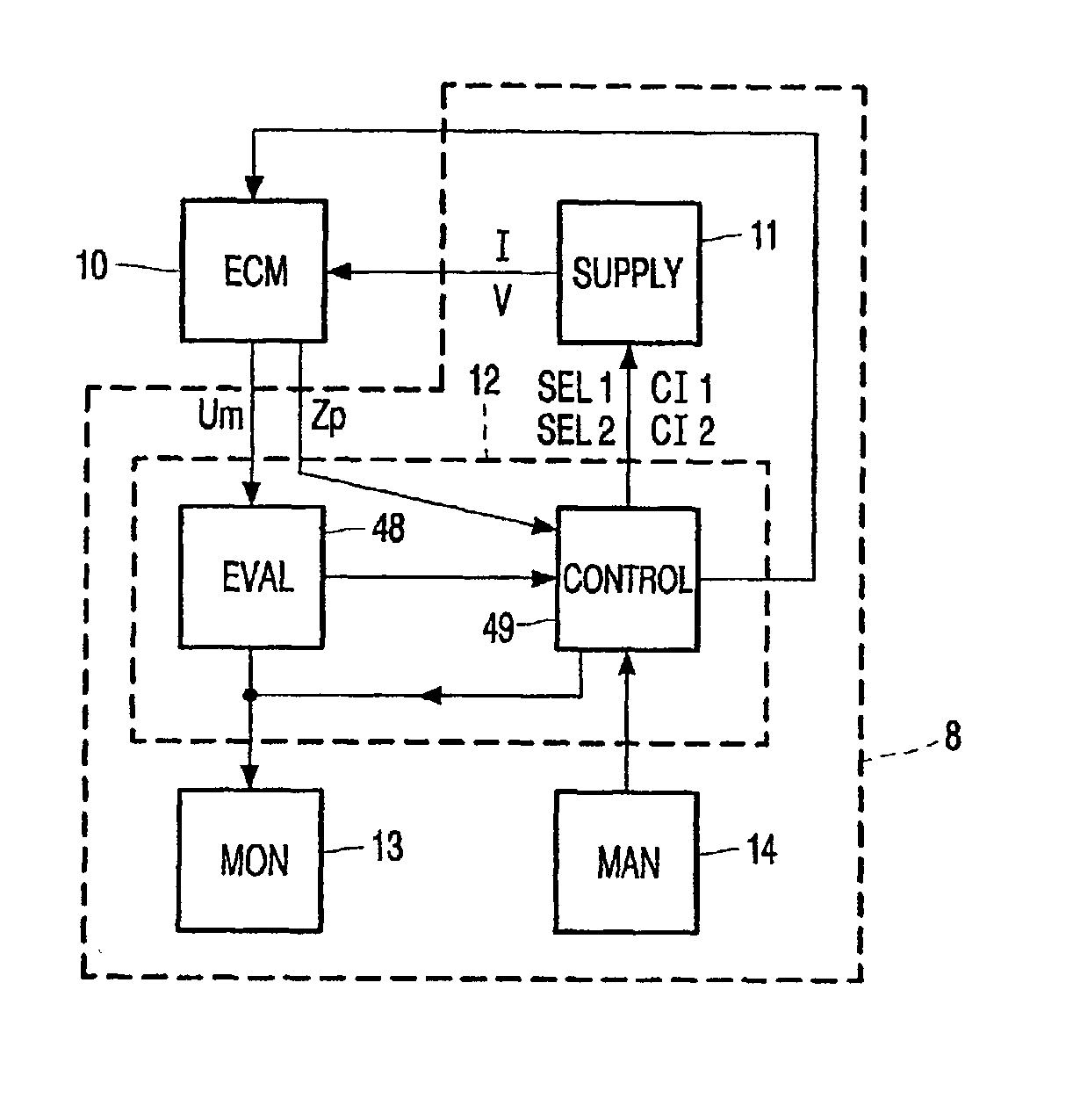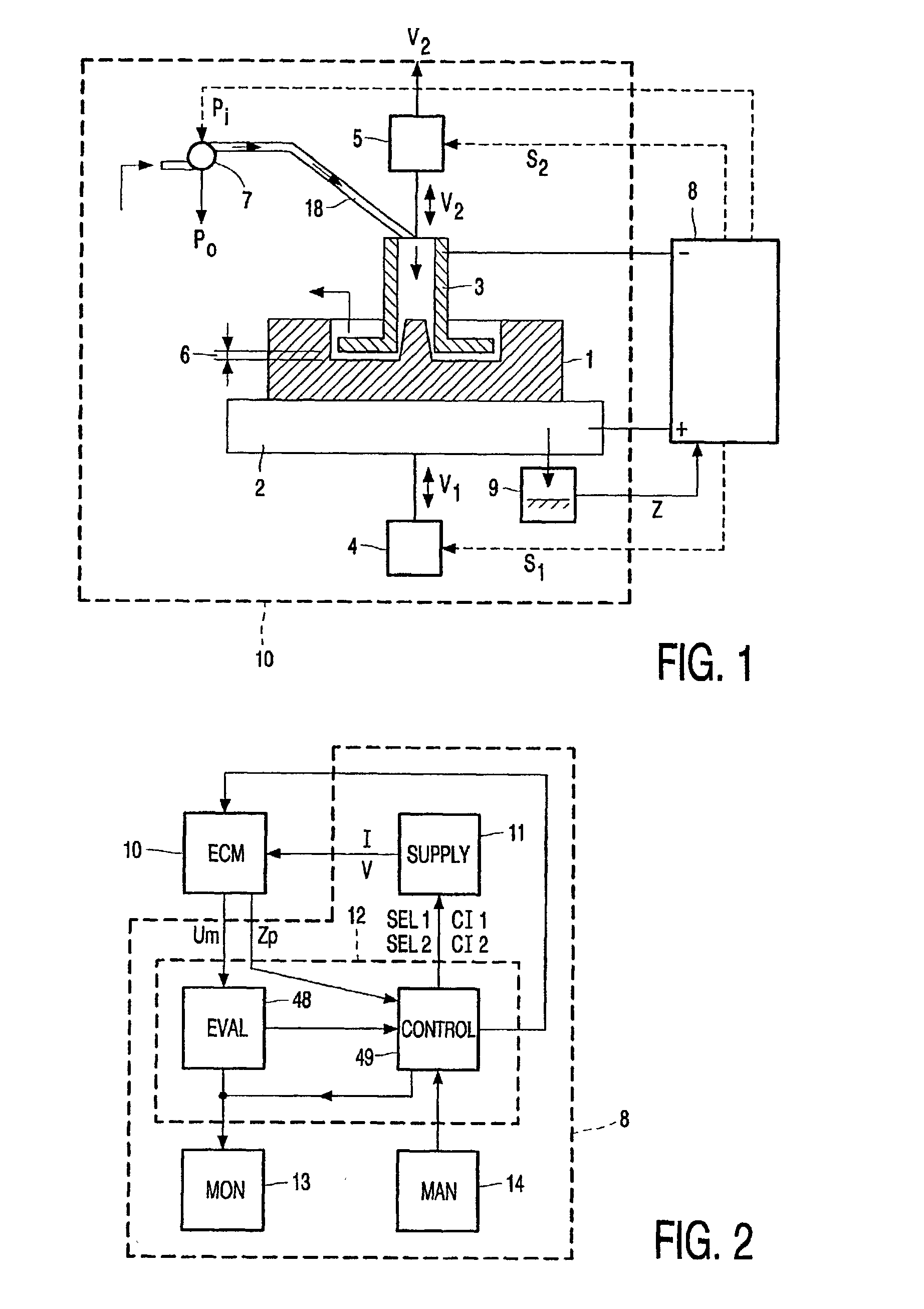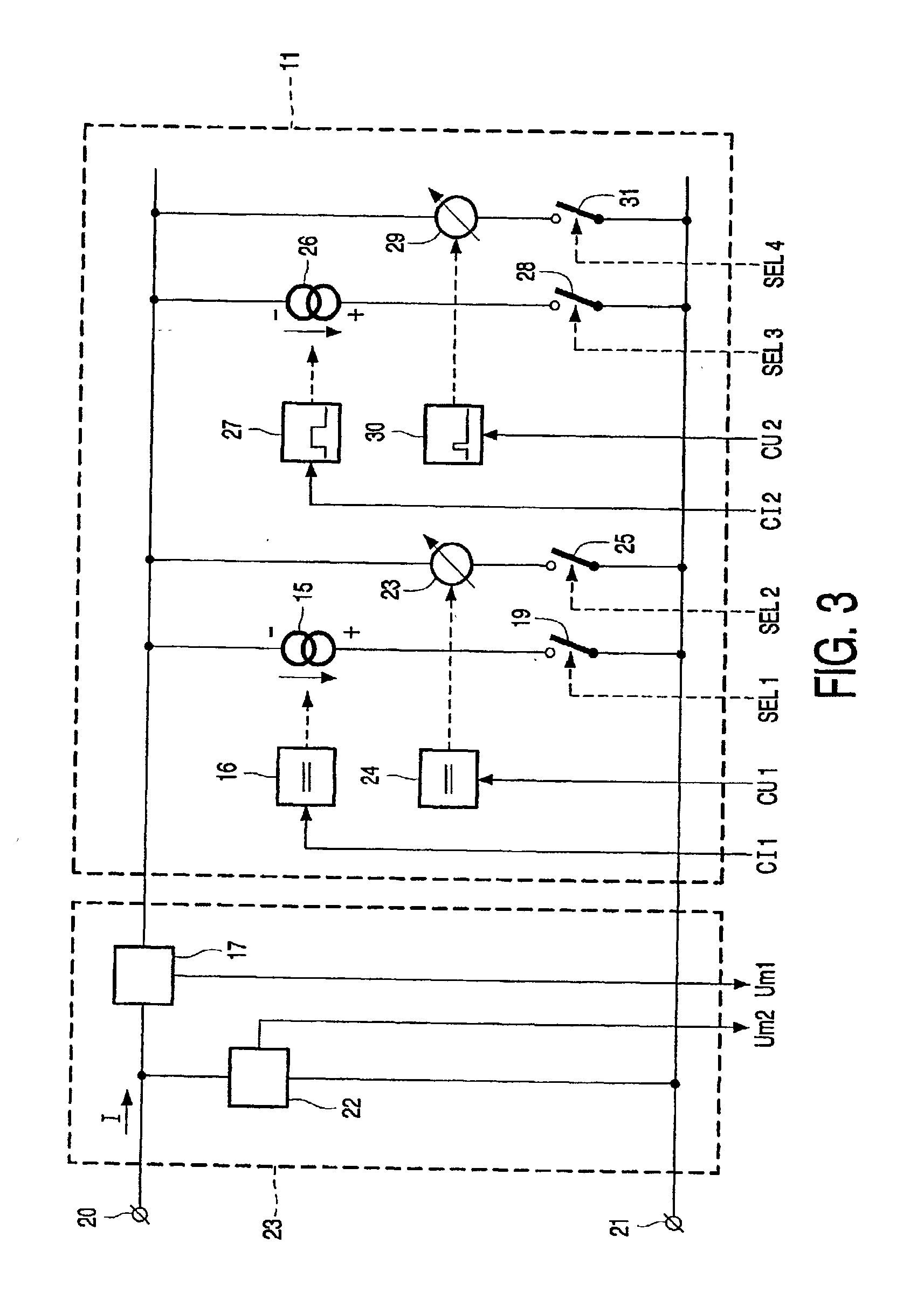Method of controlling an electrochemical machining process
a technology of electrochemical machining and control method, which is applied in the direction of machining electric circuits, manufacturing tools, instruments, etc., can solve the problems of non-conducting electrolyte regions, damage to electrodes and workpieces, and degrade the normal machining operation, so as to improve the surface quality of workpieces, improve machining accuracy, and reduce gap
- Summary
- Abstract
- Description
- Claims
- Application Information
AI Technical Summary
Benefits of technology
Problems solved by technology
Method used
Image
Examples
Embodiment Construction
[0058] FIG. 1 illustrates schematically an arrangement for electrochemically machining a workpiece 1. The workpiece 1 is carried by a table 2 which moves with a feed rate V1, by means of first positioning means 4, towards an electrode tool 3. The workpiece 1, the electrode tool 3 and the table 2 are electrically conductive. The electrode tool 3 may be moved relative to the workpiece 1 with an electrode feed rate V2 by means of second positioning means 5. The second positioning means 5 may cause the electrode tool 3 to perform an oscillatory movement such as a harmonic movement or a non-harmonic repeated movement relative to the workpiece 1. This may be realized by means of, for example a crank shaft which is driven by a motor or by hydraulic means. The first positioning means 4 may comprise linear displacement means comprising a threaded shaft. The first positioning means 4 are controlled by a first positioning control signal S1 while the second positioning means 5 are controlled by...
PUM
| Property | Measurement | Unit |
|---|---|---|
| Time | aaaaa | aaaaa |
| Time | aaaaa | aaaaa |
| Time | aaaaa | aaaaa |
Abstract
Description
Claims
Application Information
 Login to View More
Login to View More - R&D
- Intellectual Property
- Life Sciences
- Materials
- Tech Scout
- Unparalleled Data Quality
- Higher Quality Content
- 60% Fewer Hallucinations
Browse by: Latest US Patents, China's latest patents, Technical Efficacy Thesaurus, Application Domain, Technology Topic, Popular Technical Reports.
© 2025 PatSnap. All rights reserved.Legal|Privacy policy|Modern Slavery Act Transparency Statement|Sitemap|About US| Contact US: help@patsnap.com



